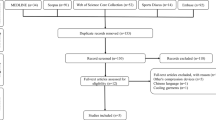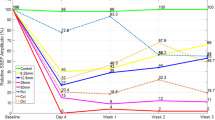Abstract
Study design:
Cell transplantation strategies are gaining increasing interest for spinal cord injury (SCI) with the objective of promoting spinal cord repair. To avoid allogenic graft rejection, an adequate immune suppression is required, and one of the most potent and commonly used immunosuppressives is cyclosporin A (CsA). In SCI, permanent sensory motor loss is combined with modifications of drug absorption, distribution and elimination.
Objectives:
The objectives of this study were to thoroughly explore histological and functional outcomes of CsA treatment in a rat model of spinal cord compression.
Setting:
Experiments were carried out at the Institute for Neurosciences of Montpellier (France), the Integrative Biology of Neurodegeneration Laboratory (Spain) and in the Novartis Institutes for BioMedical Research (Switzerland) for CsA blood concentration determination.
Methods:
We first evaluated histological outcomes of CsA treatment on kidneys and spinal cord after SCI. We then investigated whether SCI modified CsA blood concentration. Finally, using behavioral analysis, we assessed the potential CsA impact on functional recovery.
Results:
When spinal-cord-injured rats were treated with a CsA dose of 10 mg kg−1 per day, we observed deleterious effects on kidneys, associated with modifications of CsA blood concentration. Adding an antibiotic treatment reduced kidney alteration without modifying CsA blood concentration. Finally, we showed that CsA treatment per se modified neither functional recovery nor lesion extension.
Conclusion:
This study pinpoints the absolute requirement of careful CsA monitoring in the clinical setting for patients with SCI to minimize potential unexpected effects and avoid therapeutic failure.
Similar content being viewed by others
Log in or create a free account to read this content
Gain free access to this article, as well as selected content from this journal and more on nature.com
or
References
Barnabe-Heider F, Frisen J . Stem cells for spinal cord repair. Cell Stem Cell 2008; 3: 16–24.
Guizar-Sahagun G, Velasco-Hernández L, Martínez-Cruz A, Castañeda-Hernández G, Bravo G, Rojas G et al. Systemic microcirculation after complete high and low thoracic spinal cord section in rats. J Neurotrauma 2004; 21: 1614–1623.
Cruz-Antonio L, Flores-Murrieta FJ, Garcia-Lopez P, Guizar-Sahagun G, Castaneda-Hernandez G . Understanding drug disposition alterations induced by acute spinal cord injury: role of injury level and route of administration for agents submitted to extensive liver metabolism. J Neurotrauma 2006; 23: 75–85.
Ibarra A, Guízar-Sahagún G, Kretschmer R, Grijalva I, Flores-Murrieta FJ, Castañeda-Hernández G et al. Alteration of cyclosporin-A pharmacokinetics after experimental spinal cord injury. J Neurotrauma 1996; 13: 267–272.
Cattaneo D, Perico N, Gaspari F, Remuzzi G . Nephrotoxic aspects of cyclosporine. Transplant Proc 2004; 36: 234S–239S.
Ibarra A, Diaz-Ruiz A . Protective effect of cyclosporin-A in spinal cord injury: an overview. Curr Med Chem 2006; 13: 2703–2710.
Ibarra A, Guízar-Sahagún G, Correa D, Kretschmer R, Grijalva I, Flores-Murrieta FJ et al. Effects of cyclosporin-A on immune response, tissue protection and motor function of rats subjected to spinal cord injury. Brain Res 2003; 979: 165–178.
Diaz-Ruiz A, Rios C, Duarte I, Correa D, Guizar-Sahagun G, Grijalva I et al. Cyclosporin-A inhibits lipid peroxidation after spinal cord injury in rats. Neurosci Lett 1999; 266: 61–64.
Guizar-Sahagun G, Rodríguez-Balderas CA, Franco-Bourland RE, Martínez-Cruz A, Grijalva I, Ibarra A et al. Lack of neuroprotection with pharmacological pretreatment in a paradigm for anticipated spinal cord lesions. Spinal Cord 2009; 47: 156–160.
Rabchevsky AG, Fugaccia I, Sullivan PG, Scheff SW . Cyclosporin A treatment following spinal cord injury to the rat: behavioral effects and stereological assessment of tissue sparing. J Neurotrauma 2001; 18: 513–522.
Lonjon N, Kouyoumdjian P, Prieto M, Bauchet L, Haton H, Gaviria M et al. Early functional outcomes and histological analysis after spinal cord compression injury in rats. J Neurosurg Spine 2010; 12: 106–113.
Diaz-Ruiz A, Vergara P, Perez-Severiano F, Segovia J, Guizar-Sahagún G, Ibarra A et al. Cyclosporin-A inhibits inducible nitric oxide synthase activity and expression after spinal cord injury in rats. Neurosci Lett 2004; 357: 49–52.
Diaz-Ruiz A, Vergara P, Perez-Severiano F, Segovia J, Guizar-Sahagún G, Ibarra A et al. Cyclosporin-A inhibits constitutive nitric oxide synthase activity and neuronal and endothelial nitric oxide synthase expressions after spinal cord injury in rats. Neurochem Res 2005; 30: 245–251.
Busauschina A, Schnuelle P, van der Woude FJ . Cyclosporine nephrotoxicity. Transplant Proc 2004; 36: 229S–233S.
Rezzani R . Cyclosporine A and adverse effects on organs: histochemical studies. Prog Histochem Cytochem 2004; 39: 85–128.
Halloran PF, Helms LM, Kung L, Noujaim J . The temporal profile of calcineurin inhibition by cyclosporine in vivo. Transplantation 1999; 68: 1356–1361.
Belitsky P, Ghose T, Givner M, Rowden G, Pope B . Tissue distribution of cyclosporine A in the mouse: a clue to toxicity? Clin Nephrol 1986; 25 (Suppl 1): S27–29.
Cavalieri B . A certain method for the development of a new geometry of continuous indivisibles. Geometria indivisibilibus continuorum nova quadam ratione promota, Bologna, 2nd edn, 1635, pp 1–20.
Acknowledgements
We thank Arnold Webb for correction of the English text and Isabelle Sassetti for technical assistance.
Author information
Authors and Affiliations
Corresponding author
Ethics declarations
Competing interests
The authors declare no conflict of interest.
Additional information
Supplementary Information accompanies the paper on the Spinal Cord website
Supplementary information
Rights and permissions
About this article
Cite this article
Lonjon, N., Boniface, G., Feifel, R. et al. Potential adverse effects of cyclosporin A on kidneys after spinal cord injury. Spinal Cord 49, 472–479 (2011). https://doi.org/10.1038/sc.2010.117
Received:
Revised:
Accepted:
Published:
Issue date:
DOI: https://doi.org/10.1038/sc.2010.117



